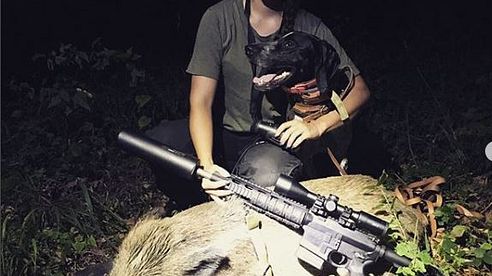We're a few weeks from the roe rut. As English summers go, 2014 is currently a corker, and what could be more English than this gorgeous corner of Gloucestershire? Deerstalker Paul Childerley grew up here. These days he runs a stalking operation in Bedfordshire that offers all Britain's deer species. His father is still a Gloucestershire gamekeeper. Paul cut his stalking teeth on this ground, on pests and on roe -- and it's roebuck we are after today.
This film was first shown in Fieldsports Britain episode 241. To watch the whole show go to http://Fcha.nl/fieldsportsbritain241
Shares
To find out how to join the Fieldsports Nation, visit FieldsportsChannel.tv/shares or to sign up and pledge, go to fieldsports.envestry.com
Risk warning: investments of this nature carry risks to your capital as well as potential rewards. Approved as a financial promotion by Envestors Limited. Which is authorised and regulated by the Financial Conduct Authority (No. 07236828.)
Sign up for our weekly email newsletter www.FieldsportsChannel.tv/register
We’re proud to promote enjoyment of fieldsports and the countryside. There are three guiding principles to everything we do on Fieldsports Channel:
▶ Shoot responsibly
▶ Respect the quarry
▶ Ensure a humane, clean and quick kill
Take part in nature. Join the Fieldsports Nation https://Fcha.nl
Why shoot deer?
There are more than two million red, roe, fallow, sika, muntjac and Chinese water deer in Britain’s countryside and semi-urban areas, the highest level for 1,000 years. Numbers have doubled since 1999, according to the Deer Initiative, the UK government’s deer agency.
Deer are an attractive and an important part of our wildlife. However, they have no natural predator in the UK so numbers must be sensibly and strategically managed to keep them in balance with their habitat and to prevent damage to crops, trees, woodland flora, gardens and other wildlife.
Deer cause £4.5 million-worth (Forestry Commission Scotland) of damage to plantations and other commercial woodlands in Scotland. Crop damage is estimated at £4.3m a year according to DEFRA, with the greatest damage on cereal crops in east and south-west England.
More than 8,000 hectares (Parliamentary Office for Science and Technology) of woodland with SSI status is currently in ‘unfavourable’ or ‘recovering’ condition due to deer impacts such as browsing and fraying. Deer can also influence the variety of wildlife in woodlands and other habitats by altering structural and plant species diversity. According to the University of East Anglia’s Dr Paul Dolman, that has resulted in a 50% decline in woodland bird numbers where deer are present, impacting particularly on nightingales, blackcaps, chiffchaffs and warblers.
Deer are susceptible to Bovine TB and may be responsible for the transmission of TB to cattle. They are also the likely driver behind the UK’s increasing tick population (Scharlemann et al 2008).
Happily, venison is a delicious meat. It is wild, natural and free range, and – almost fat-free – it is one of the healthiest meats available today. Results from research commissioned by the Game-to-Eat campaign (Leatherhead Food International Research 2006) suggest that there are real health benefits to eating game. Venison is high in protein, low in saturated fatty acids and contains higher levels of iron than any other red meat.
 Frühjahrsböcke und Damwildjagd im Mai
Frühjahrsböcke und Damwildjagd im Mai
 Jagdmesser Eickhorn Solingen – Vom Gefechtsfeld zur Jagd
Jagdmesser Eickhorn Solingen – Vom Gefechtsfeld zur Jagd
 Jagd mit AR10 / AR15 - Erfahrungsbericht
Jagd mit AR10 / AR15 - Erfahrungsbericht